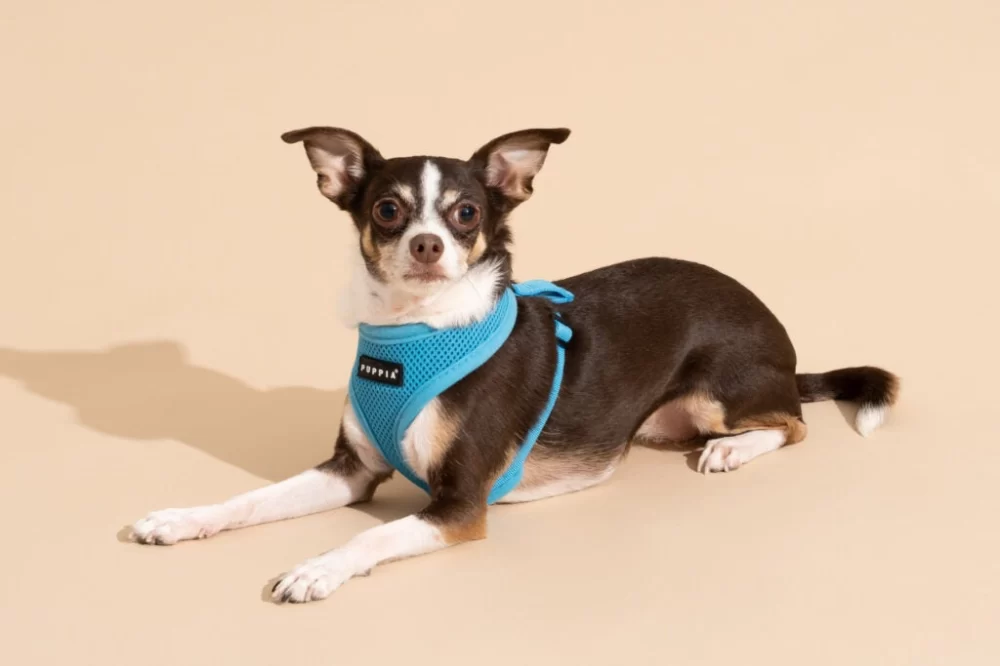- Why Choose a Harness for Small Dogs
- Key Features of Best Dog Harnesses for Small Dogs
- How to Select the Right Harness for Your Small Dog
- Real-Life Examples and Expert Advice
- Where to Find Quality Harnesses and Services
1. Why Choose a Harness for Small Dogs
When it comes to walking your small dog, choosing the right harness is crucial for their comfort, safety, and well-being. Unlike collars, which can put strain on a dog’s delicate neck and throat, harnesses distribute pressure evenly across the chest and shoulders, reducing the risk of injury. This is especially important for small breeds, whose fragile anatomy requires extra care.
Small dog harnesses also offer better control for pet owners, making walks more enjoyable and safer. For example, breeds like Chihuahuas and Pomeranians often have a tendency to pull or dart suddenly. A properly fitted harness gives you the ability to gently guide your dog without causing discomfort.
Choosing a harness designed specifically for small dogs ensures a better fit, as generic harnesses can be bulky or poorly adjusted, which may irritate your pet or cause chafing. The best dog harnesses for small dogs focus on lightweight materials and ergonomic design to accommodate their unique body shapes.
2. Key Features of Best Dog Harnesses for Small Dogs
2.1 Lightweight and Breathable Materials
Small dogs tend to overheat easily, so the harness should be made of breathable mesh or soft fabric that allows air circulation. A harness that’s too heavy or restrictive can cause discomfort and make your dog reluctant to wear it.
2.2 Adjustable Fit for Growing and Active Dogs
The best harnesses come with multiple adjustment points to ensure a snug yet comfortable fit. This is essential because even within small breeds, body sizes and shapes can vary greatly. An adjustable harness can also accommodate weight fluctuations or growth in puppies.
2.3 Easy to Put On and Take Off
A harness that’s easy to clip on and off saves time and reduces stress for both you and your dog. Features like quick-release buckles and stretchy straps improve convenience, especially for dogs who are fidgety during dressing.
2.4 Safety Features
Reflective strips, secure D-rings for leash attachment, and durable stitching contribute to the safety of the harness. Since small dogs can be harder to spot on early morning or evening walks, these features enhance visibility and security.
3. How to Select the Right Harness for Your Small Dog
3.1 Measure Your Dog Correctly
Start by measuring your dog’s chest girth—the widest part of their rib cage—and their neck circumference. These measurements are key to finding a harness that fits well without being too tight or loose. For small dogs, even a small misfit can cause discomfort or slipping out of the harness.
3.2 Consider Your Dog’s Behavior and Needs
Is your dog an active puller or more laid-back? Do they enjoy daily walks or short outings? Dogs that pull may benefit from front-clip harnesses that discourage pulling, while more relaxed dogs might do well with step-in harnesses that are easy to wear.
3.3 Material Sensitivity and Comfort
Some dogs have sensitive skin or allergies to certain fabrics. Opt for hypoallergenic materials or soft padding if your dog has shown signs of irritation. Comfort is crucial to encourage your dog to wear the harness consistently.
4. Real-Life Examples and Expert Advice
Take the story of Daisy, a 5-year-old Yorkshire Terrier whose owner struggled to find a harness that didn’t rub her delicate skin raw. After switching to a lightweight, mesh adjustable harness recommended by Hidden Brook Veterinary, Daisy became much more comfortable and excited for walks again. Her owner appreciated how easy the harness was to put on and how secure it felt.
Veterinarians often emphasize the importance of regular checks and proper fitting to avoid chafing or pressure sores. They recommend choosing harnesses with padded straps and adjusting them monthly as your dog grows or changes weight.
Moreover, professionals advise against using harnesses that encourage pulling behavior by giving the dog too much freedom or improper control. Front-clip harnesses or no-pull designs can be excellent solutions for training purposes.
5. Where to Find Quality Harnesses and Services
Finding the perfect harness doesn’t have to be overwhelming. Trusted providers like Hidden Brook Veterinary offer a carefully curated selection of the best dog harnesses for small dogs, ensuring you get durable, comfortable, and safe products. Their experts can also help you with sizing advice and personalized recommendations tailored to your dog’s breed, size, and temperament.
Beyond product selection, Hidden Brook Veterinary provides valuable resources on proper harness fitting, behavior tips, and health care advice. Investing time in finding the right harness and learning how to use it correctly will transform your walking routine and strengthen the bond with your furry friend.












